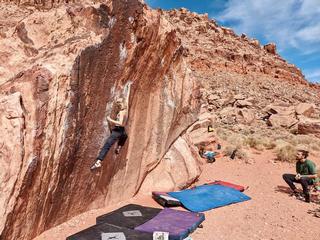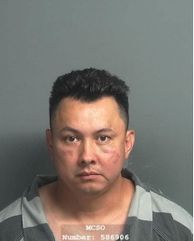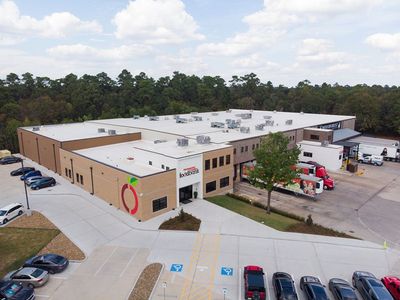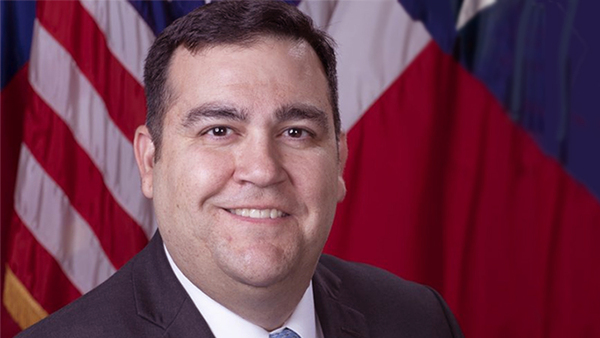- Sections :
- Crime & Public Safety
- Restaurants & Food
- Sports
- More
Categories
Spring woman undergoes innovative procedure to treat painful and recurring bone deformity
SPRING, TX -- For most of my life, I have suffered from pain and discomfort caused by bunions on both of my feet. I first noticed the telltale bumps on the sides of my big toes, not knowing what they were, when I was in high school and by the time I was a junior, my bunions had worsened. I eventually experienced pain any time I put weight on my feet and had to sleep with them hanging off my bed so that I could lay on my side without putting any pressure on them..
Even though almost 25% of people in the United States suffer from bunions, many people have misconceptions about what they are. The condition is a progressive bone deformity caused by an unstable joint in the middle of the foot that allows the big toe to drift out of alignment in three dimensions, causing it to lean, elevate and rotate. While they are most commonly seen in women, men and teenagers can also develop them due to the condition’s tendency to run in families. As the bone deformity worsens, it can impact patients’ abilities to participate in active lifestyles. Eventually, bunions can make even simple daily tasks like walking or grocery shopping almost impossible. Doctors usually recommend that patients initially try conservative management options including buying wider shoes, wearing padding or using orthotics to accommodate the bone deformity and reduce their pain. However, the condition cannot correct itself and, in many cases, surgery is discussed as a next step.
In 2006, the pain I was experiencing was becoming unbearable and with the support of my parents and my doctor, I made the decision to undergo a bunion removal surgery called 2D osteotomy. My doctor told me that the procedure involved “shaving off” the protruding bones on the sides of my feet and explained that there was a chance that the bunions might return. Despite this possibility, my family and I felt it was the right choice at the time to go through with the procedure and had both my feet corrected at the same time.
Unfortunately, my experience with the 2D osteotomy procedure was not a positive one. I remember being in pain for months after the procedure and it took years for me to regain movement and stability in my big toes. I could not put pressure on my feet for a long time and it took me over five years to be able to stand on my tippy toes and bend my big toe. I still have limited mobility of my big toe joint to this day.
After the long and frustrating recovery process, my bunions still returned about ten years later. By that time, I was an avid rock climber and was bouldering multiple times every week. This type of climbing typically takes place 15-20 feet off the ground and rather than using a rope to repel back down to the ground, climbers jump down, making it a very high impact sport. When the bunions came back, they started preventing me from being able to wear my climbing shoes and participate in the sport I love without experiencing pain but based on my negative past experience, I vowed to never undergo surgery to treat them again. After meeting Dr. Thomas Pignetti at Advanced Footcare, I felt differently.
During my first appointment with Dr. Pignetti, my initial intention was just to confirm that my bunions had returned and see if there were any orthotic inserts for my shoes that I could use to prevent them from getting any worse. He explained that while the traditional surgery I underwent temporarily improved the appearance of my feet, it did not address the bone deformity that caused the bunions. He then told me about a relatively new procedure called Lapiplasty® 3D Bunion Correction™ that differs from traditional procedures in that it involves properly aligning and securing the bones in the foot, correcting the bunion’s root cause by stabilizing the joint. After the doctor explained the science behind the procedure and showed me how it worked, I decided to give the option a shot and scheduled surgery for my right foot in March 2019.
I was shocked at how much easier the recovery from Lapiplasty® Procedure was than from the 2D osteotomies. I had very little pain and was able to bear weight on my foot within days of the surgery. I wore a surgical boot for about six weeks and with regular icing and elevation of my foot, I was cleared to return to normal activity. I got back to bouldering in June 2019 and decided to undergo Lapiplasty® on my left foot just six months later in October 2019.
Since my procedures, I have fully returned to my normal level of physical activity without any complications. I am back to bouldering several times a week and recently went on a climbing trip where I sent a problem that I had not been able to complete on my last trip, due in part, I imagine, to the pain my bunions caused while I was climbing. I have shared my experience with friends and family and encourage anyone who is suffering from the condition to visit a Lapiplasty®-certified doctor to see if they are a good candidate for the procedure. I wish I had known about it sooner and cannot wait to see what my future without bunion pain looks like!
For more information about the Lapiplasty® Procedure visit www.Lapiplasty.com. To schedule an appointment with Dr. Pignetti, call 281-292-7000 or visit www.FootSpecialist.com.
Only a surgeon can tell if Lapiplasty® 3D Bunion Correction™ is right for you. As with any medical treatment, individual results may vary and this experience is unique and specific to this patient only. There are potential risks with surgery and recovery takes time. Potential risks include, but are not limited to: infection, pain, discomfort from the presence of the implant, loosening of the implant, and loss of correction with improper bone healing.
1American College of Foot and Ankle Surgeons (ACFAS) Website ©2018, WebMD Website ©2018.
2Nix S, et al. J Foot Ankle Res. 2010. 27:3:21.
3American College of Foot and Ankle Surgeons (ACFAS) Website ©2019, WebMD Website ©2019.
4American College of Foot and Ankle Surgeons (ACFAS) Website ©2018, WebMD Website ©2018.
5American College of Foot and Ankle Surgeons (ACFAS) Website ©2019
Cleveland Clinic Health Essentials Website, ©2019.
6Jeuken RM, et al. Foot Ankle Int. 2016. 37:687-95.
7Catanzariti AR, et al. J Foot Ankle Surgery, 38:325-32.
Even though almost 25% of people in the United States suffer from bunions, many people have misconceptions about what they are. The condition is a progressive bone deformity caused by an unstable joint in the middle of the foot that allows the big toe to drift out of alignment in three dimensions, causing it to lean, elevate and rotate. While they are most commonly seen in women, men and teenagers can also develop them due to the condition’s tendency to run in families. As the bone deformity worsens, it can impact patients’ abilities to participate in active lifestyles. Eventually, bunions can make even simple daily tasks like walking or grocery shopping almost impossible. Doctors usually recommend that patients initially try conservative management options including buying wider shoes, wearing padding or using orthotics to accommodate the bone deformity and reduce their pain. However, the condition cannot correct itself and, in many cases, surgery is discussed as a next step.
In 2006, the pain I was experiencing was becoming unbearable and with the support of my parents and my doctor, I made the decision to undergo a bunion removal surgery called 2D osteotomy. My doctor told me that the procedure involved “shaving off” the protruding bones on the sides of my feet and explained that there was a chance that the bunions might return. Despite this possibility, my family and I felt it was the right choice at the time to go through with the procedure and had both my feet corrected at the same time.
Unfortunately, my experience with the 2D osteotomy procedure was not a positive one. I remember being in pain for months after the procedure and it took years for me to regain movement and stability in my big toes. I could not put pressure on my feet for a long time and it took me over five years to be able to stand on my tippy toes and bend my big toe. I still have limited mobility of my big toe joint to this day.
After the long and frustrating recovery process, my bunions still returned about ten years later. By that time, I was an avid rock climber and was bouldering multiple times every week. This type of climbing typically takes place 15-20 feet off the ground and rather than using a rope to repel back down to the ground, climbers jump down, making it a very high impact sport. When the bunions came back, they started preventing me from being able to wear my climbing shoes and participate in the sport I love without experiencing pain but based on my negative past experience, I vowed to never undergo surgery to treat them again. After meeting Dr. Thomas Pignetti at Advanced Footcare, I felt differently.
During my first appointment with Dr. Pignetti, my initial intention was just to confirm that my bunions had returned and see if there were any orthotic inserts for my shoes that I could use to prevent them from getting any worse. He explained that while the traditional surgery I underwent temporarily improved the appearance of my feet, it did not address the bone deformity that caused the bunions. He then told me about a relatively new procedure called Lapiplasty® 3D Bunion Correction™ that differs from traditional procedures in that it involves properly aligning and securing the bones in the foot, correcting the bunion’s root cause by stabilizing the joint. After the doctor explained the science behind the procedure and showed me how it worked, I decided to give the option a shot and scheduled surgery for my right foot in March 2019.
I was shocked at how much easier the recovery from Lapiplasty® Procedure was than from the 2D osteotomies. I had very little pain and was able to bear weight on my foot within days of the surgery. I wore a surgical boot for about six weeks and with regular icing and elevation of my foot, I was cleared to return to normal activity. I got back to bouldering in June 2019 and decided to undergo Lapiplasty® on my left foot just six months later in October 2019.
Since my procedures, I have fully returned to my normal level of physical activity without any complications. I am back to bouldering several times a week and recently went on a climbing trip where I sent a problem that I had not been able to complete on my last trip, due in part, I imagine, to the pain my bunions caused while I was climbing. I have shared my experience with friends and family and encourage anyone who is suffering from the condition to visit a Lapiplasty®-certified doctor to see if they are a good candidate for the procedure. I wish I had known about it sooner and cannot wait to see what my future without bunion pain looks like!
For more information about the Lapiplasty® Procedure visit www.Lapiplasty.com. To schedule an appointment with Dr. Pignetti, call 281-292-7000 or visit www.FootSpecialist.com.
Only a surgeon can tell if Lapiplasty® 3D Bunion Correction™ is right for you. As with any medical treatment, individual results may vary and this experience is unique and specific to this patient only. There are potential risks with surgery and recovery takes time. Potential risks include, but are not limited to: infection, pain, discomfort from the presence of the implant, loosening of the implant, and loss of correction with improper bone healing.
1American College of Foot and Ankle Surgeons (ACFAS) Website ©2018, WebMD Website ©2018.
2Nix S, et al. J Foot Ankle Res. 2010. 27:3:21.
3American College of Foot and Ankle Surgeons (ACFAS) Website ©2019, WebMD Website ©2019.
4American College of Foot and Ankle Surgeons (ACFAS) Website ©2018, WebMD Website ©2018.
5American College of Foot and Ankle Surgeons (ACFAS) Website ©2019
Cleveland Clinic Health Essentials Website, ©2019.
6Jeuken RM, et al. Foot Ankle Int. 2016. 37:687-95.
7Catanzariti AR, et al. J Foot Ankle Surgery, 38:325-32.
Comments •





















